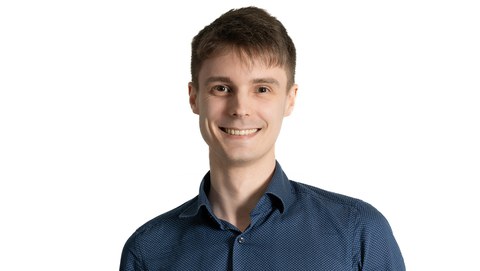Sep 27, 2024
TU student Justin Bürger receives young talent award
The German Datacenter Association (GDA) focuses on the future of the industry and honors up-and-coming talents. As conclusion of this year's German Datacenter Conference on September 3, 2024, outstanding scientific work from the IT and data center sector was once again honored. This included that of TUD student Justin Bürger, who wrote his research paper on the reproducibility of research data using a model repository at TU Dresden's ZIH.
Justin Bürger is completing the Master's degree program in Computational Modeling and Simulation at TU Dresden, during which he also spent an exchange semester at the CentraleSupeléc in Paris-Saclay. The phone call from the GDA jury now reached him in Taiwan, where he took part in the Semiconductor Talent Incubation Program with the first group of students from TUD.
Reproducibility of research data: Need for modernization of older data
In many areas of research, especially in the life sciences, published results prove difficult to reproduce by other laboratories. Today, this dilemma can be increasingly mitigated through the development of standard operating procedures (SOP), their digital logging and the management of digitized research data according to the FAIR principles.
For his research work, Justin Bürger turned to a highly regarded past study that was published in the journal PLoS Computational Biology back in 2011. The study analyzed a central process of embryonic development in vertebrates, known as somitogenesis, which achieves the segmentation of the main body axis for, among other things, the formation of the vertebral column from individual vertebrae. The original publication presented the development and results of the most comprehensive computer model of somitogenesis to date. Although the underlying source code was also published, it is no longer executable due to dependencies on software libraries of the time and could not be reconstructed even by the authors upon request.
Morpheus model repository as a guarantee for sustainable research data
However, Justin Bürger has succeeded in isolating the biological information content and parameterization from the published computer model. In order to store the data - now free of dependencies and specific simulation code - in a sustainable and machine-readable way, he used the MorpheusML model description language developed in the Innovative Methods of Computing (IMC) department at the Center for Information Services and High Performance Computing (ZIH) at the TUD. This means that various simulation programs such as "Morpheus" or "Artistoo" can now further process, simulate and analyze the model transferred into the standardized MorpheusML language.
With his work, Justin Bürger has thus shown how research data in the field of computational biology can be separated from the source code of specific simulation software using a standardized model description language and made persistently accessible to other simulators via data centers with model repositories.
With Morpheus, Justin Bürger has also qualitatively and quantitatively reproduced and confirmed the originally published results (the simulator used at the time was "CompuCell3D") (see https://identifiers.org/morpheus/M6696). The model repository he used for this is operated by ZIH's IMC department and is used by researchers worldwide. The MorpheusML model standard for research data in the field of computational biology was also recently taken up by the "Virtual Human Twin" roadmap at EU level and is now being maintained by a global community (COmputational Modeling in BIology NEtwork).
Prof. J. A. Glazier, Director of the Biocomplexity Institute at Indiana University (USA) and last author of the original paper emphasizes: "Keeping multiscale agent-based computational models with complex sets of biological cell behaviors, mechanics and signaling, gene regulation, etc. working after more than a decade is really a tough problem. The original simulation code doesn't run any more on modern hardware and it involved quite a few computational details. I'm really pleased to see that Justin Bürger has managed to bring this very influential model back to life and to define its exact equations and technical details in a standardized format. Moreover, confirming our original results in an independent software framework (now in Morpheus while originally in CompuCell3D) is an important step in motivating our research community to exchange additional foundational computational models between simulator frameworks. Such exchange and validation is essential as we move towards collaboratively building more detailed models for use in Medical Digital Twins. I'm looking forward to collaborating intensively with the Morpheus team from ZIH as a partner in our worldwide Open Virtual Tissues (OpenVT) initiative.“
Applying the model to open biological questions
Back in Dresden, Justin Bürger is next planning his Master's thesis in Computational Modeling and Simulation in ZIH's IMC department. For this, he has set himself the task of applying his award-winning computer model to new experimental data in a collaboration with the Cluster of Excellence "Physics of Life" (PoL).
Further information
Contact Dr. Lutz Brusch
Press release of the GDA: https://www.germandatacenters.com/news/detail/zukunft-der-branche-im-fokus/

